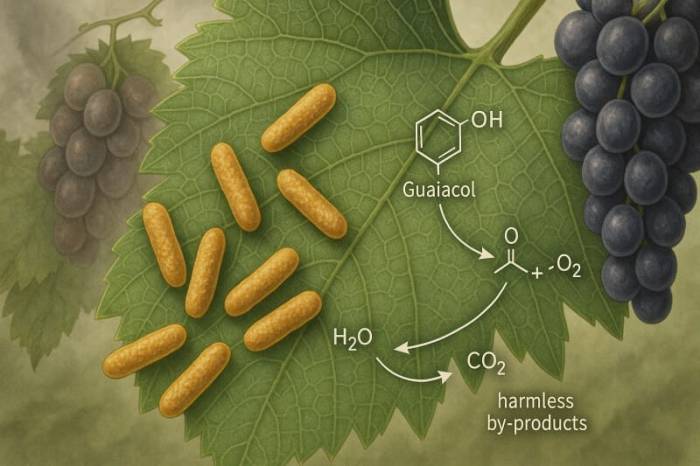US Scientists Identify Bacteria That Break Down Smoke Taint in Wine Grapes, Offering Hope for $Millions Lost to Wildfires
Discovery of guaiacol-degrading microbes on grapevines could lead to sustainable solutions for wildfire-affected vineyards on the West Coast.
2025-11-12

Researchers at the United States Department of Agriculture’s Agricultural Research Service have discovered that bacteria living naturally on grapevines can break down guaiacol, a compound responsible for the smoky and ashy flavors found in wines made from grapes exposed to wildfire smoke. This finding could lead to new biotechnological methods to help winemakers salvage vintages affected by wildfires, which have become more frequent in wine-producing regions along the West Coast.
The research team collected leaves from Chardonnay and Cabernet Sauvignon grapevines and screened them for bacteria capable of metabolizing guaiacol. They identified two strains of Gordonia alkanivorans that were able to use guaiacol as their only carbon source in laboratory tests. Further genetic analysis revealed several genes involved in this process, including one called guaA. When researchers deleted the guaA gene, the bacteria lost their ability to break down guaiacol, confirming its key role.
To simulate wildfire conditions, the team exposed living Merlot plants to smoke produced by a culinary smoker. They then examined the bacterial communities on both leaves and grapes before and after exposure. Within days, they observed significant changes in the microbiome, including a notable increase in bacteria from the class Bacilli, which are known for their resilience in harsh environments.
Smoke taint has become a major concern for the wine industry, with millions of dollars lost in recent years due to affected harvests. Grapes can absorb smoke compounds that persist through fermentation, resulting in wines with undesirable flavors. Previous studies had shown that soil bacteria could break down guaiacol, but this is the first time researchers have demonstrated that microbes living directly on grapevines can perform the same function.
Lead author Dr. Claudia Castro explained that identifying these bacteria opens up possibilities for developing genetic tools or treatments to combat smoke taint. “In this study, we identified two members of the grape microbiome capable of degrading guaiacol, a volatile phenol that contributes to smoke taint of wine,” Dr. Castro said. She also noted that working with collaborators to set up simulated wildfire conditions was a memorable part of the research process.
The discovery suggests that harnessing naturally occurring bacteria could become part of a sustainable strategy to protect both the flavor and economic value of wines produced in regions increasingly threatened by wildfires. The research team believes that further study could lead to practical applications in vineyards, potentially allowing winemakers to reduce or eliminate unwanted smoky flavors without relying on chemical interventions.
As wildfires continue to pose challenges for agriculture and viticulture across California, Oregon, and Washington, this research offers hope for an industry seeking ways to adapt and maintain quality standards despite environmental pressures. The findings highlight how advances in microbiology can be applied directly to viticulture, providing new tools for growers and producers facing an uncertain climate future.
Founded in 2007, Vinetur® is a registered trademark of VGSC S.L. with a long history in the wine industry.
VGSC, S.L. with VAT number B70255591 is a spanish company legally registered in the Commercial Register of the city of Santiago de Compostela, with registration number: Bulletin 181, Reference 356049 in Volume 13, Page 107, Section 6, Sheet 45028, Entry 2.
Email: [email protected]
Headquarters and offices located in Vilagarcia de Arousa, Spain.